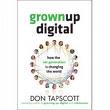Archive for the ‘Books & Articles’ Category
Title: Where Good Ideas Come From: The Natural History of Innovation
Pub Date: 2010
 Excellent look at ideation and the development of ideas over time. Both theoretical and practical.
Excellent look at ideation and the development of ideas over time. Both theoretical and practical.
Key to Johnson’s discussion is the concept of the “adjacent possible.” Simply put, like ideas tend to cluster together. When you bring different clusters together you benefit from ideas in adjacent groups. Ideas bleed into adjacent groups, or spillover, and generate new ideas.
Johnson also debunks the notion of the “eureka moment.” Instead, Johnson shows that new innovative ideas are often born of long held hunches. Those hunches that ruminate in the back of your mind for weeks, months, and even years.
According to Johnson, “the secret to organizational inspiration is to build information networks that allow hunches to persist and disperse and recombine.” By creating high density liquid networks, organizations make is easier for innovation to happen.
But don’t take my word for it, hear Johnson describe where good ideas come from in his own words.
Title: The New Rules of Marketing & PR
Author: David Meerman Scott
Pub Date: June, 2007
 The best book I’ve read that deals with the blurring lines between marketing and PR. Scott speaks from knowledge based on a long a history of breaking the rules when it comes to reaching his buyers.
The best book I’ve read that deals with the blurring lines between marketing and PR. Scott speaks from knowledge based on a long a history of breaking the rules when it comes to reaching his buyers.
Scott’s number one focus is connecting with the buyer and his book is full of examples and great advice that’s easy to digest.
Some tidbits:
- “Content drives action.”
- “Don’t tell journalists [and bloggers] what your product does. Tell them how you solve customer problems.”
- “The web has changed the rules. Today, organizations are communicating directly with buyers.”
- “You are what you publish.”
Best piece of advice:
“Do not write about your company and your products. Thought leadership content is designed to solve buyer problems…”
Scott recommends developing personas through research and interview with your buyers to help identify their needs, the language they use, and what they’re looking for from your company.
Business take-away:
The web has opened a whole new world for both companies and buyers. It doesn’t eliminate the need for PR and marketing but it should change how you go about communicating with your buyers.
- Use personas to understand your audiences’ needs.
- Look for ways to shift from one-way to two-way communications.
- Use the web to give your company a voice and create a direct, personal connection with your buyers.
- And finally, look for agencies who understand and embrace this new world. Ones who can help you navigate and leverage it to your advantage.
Scott is speaking at the MarketingProfs B2B conference, up in Boston June 9 -10.
Title: Words that Work. It’s not what you say, it’s what people hear.
Author: Dr. Frank Luntz
Pub Date: Dec, 2006My colleagues over at the Kauffman Foundation recommended reading this book. Definitely worth a read, and can get through it in a weekend.

Frank Luntz, a political consultant and pollster, knows how to pick just the right words to make a compelling case for whatever he’s shelping. He uses lots of examples throughout of how one small word can make a big difference.
What I like at Luntz’s approach is that he focuses primarily on the listener (the audience). He tries to get inside their head to hear the message from their perspective, then select just the right words to make his case or get his point across in a way that the audience can hear.
What he says isn’t revolutionary – basically your messages must focus on the benefits to your audience and the results you’ll deliver. What is new is the depth with which he understands and explores the individual words we use.
Some tidbits:
- “…tell consumers something that gives them a brand new take on an old idea. The combination of surprise and intrigue creates a compelling message.” Your objective is to generate an “I didn’t know that” response.
- Focus on results not process. For example, Luntz found that “getting value for government” was much better received than “limited government”. One focuses on results the other is process oriented.
- “A ‘service’ helps you live with a problem. A ‘solution’ alleviates the problem.”
Best piece of advice:
How to avoid a ticket: Create a hassle-free environment.
- First, recognize the police officer’s authority and superiority.
- Acknowledge your guilt.
- Turn off your engine, roll down the window, put both hands on the wheel where the cop can see them with your license and registration, and turn on the dome light if it’s dark.
- Say, “I’m sorry.” Don’t argue or make up excuses.
I tried it. It worked.
Business take-away:
It’s not enough to have the right solution, the best technology, or the only answer. You must present it in a way that convinces your audience that it solves their problem.
- Create personas for your target customers. They’ll help you focus on what your audience wants and not what you want to tell them.
- Remember that business people are people first. Write to them, not at them.
- Simple, straight talk wins out over complex marketing messages.
- Speak to results first, and how later.




